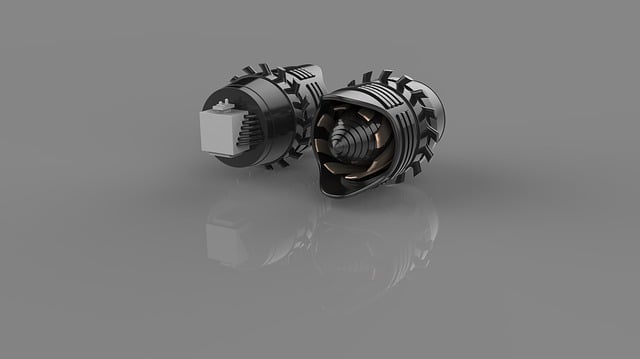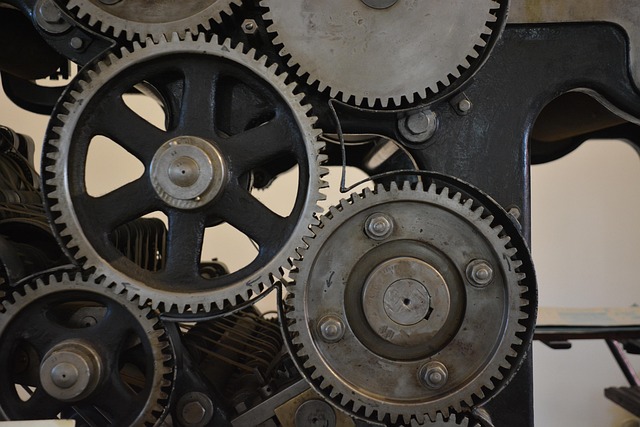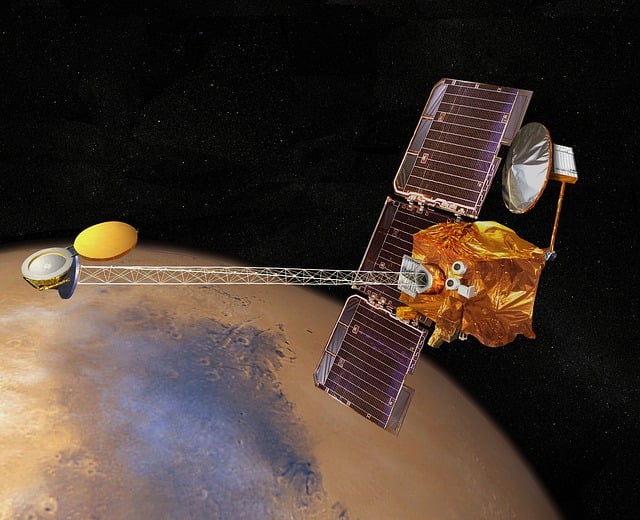Before pursuing aerospace engineering, assess your passion for aviation and mathematics, define career goals, and research specializations. Excel in high school math, science, and AP courses. Take AP physics, calculus, chemistry, and computer science to gain a head start. Build practical experience through projects or internships. Familiarize yourself with industry-standard software. Enhance communication and problem-solving skills. Develop effective study habits for university-level work, focusing on time management and key concepts.
Aspiring aerospace engineers, this is your guide to launching a successful academic journey. Transitioning from high school to university-level aerospace engineering requires a strategic preparation plan. This article equips you with 10 essential tips, covering everything from cultivating an interest and strengthening math/science skills to gaining practical experience and understanding key software tools. By following these steps, you’ll build a solid foundation for your future in the dynamic field of aerospace.
- Assess Your Interest & Goals for Aerospace Engineering
- Strengthen Math & Science Skills During High School
- Take Relevant Advanced Placement (AP) Courses
- Build Practical Experience Through Projects & Internships
- Familiarize Yourself with Aerospace Software Tools
- Develop Strong Communication & Problem-Solving Abilities
- Research University Programs & Prerequisites
- Prepare for Challenging University Courses
Assess Your Interest & Goals for Aerospace Engineering

Before diving into the world of aerospace engineering, it’s crucial to assess your interest and set clear goals. This field demands a strong passion for aviation, physics, mathematics, and problem-solving—a blend that drives innovation in aircraft, spacecraft, and related technologies. Start by exploring your curiosity about how things fly, what makes them work, and the challenges of space exploration. Consider the impact aerospace engineering has on our world, from commercial flights to satellite communications, and envision yourself contributing to these advancements.
Define your aspirations: Do you want to design cutting-edge aircraft? Develop propulsion systems? Or perhaps focus on astronautics and space missions? Setting specific goals will guide your preparation journey. Research various specializations within aerospace engineering to align your interests with potential career paths. This self-reflection is key to building the right foundation for the challenges and opportunities that await you in this exciting field.
Strengthen Math & Science Skills During High School

During high school, focus on strengthening your math and science skills as these are fundamental to aerospace engineering. Courses like calculus, physics, chemistry, and advanced placement (AP) options in these subjects will lay a solid groundwork for university-level studies. Not only do these classes introduce essential concepts, but they also teach critical thinking and problem-solving abilities that are crucial for engineers.
Encourage your high school students to not just pass these courses but to excel and understand the underlying principles. This dedication to math and science will make the transition to university-level aerospace engineering courses much smoother and set them up for success in their future career.
Take Relevant Advanced Placement (AP) Courses

Taking Relevant Advanced Placement (AP) courses during high school can significantly prepare you for the rigor and depth of aerospace engineering studies at university level. These college-level courses offer an excellent opportunity to explore subjects that are fundamental to your future discipline, allowing you to build a solid academic foundation. Focus on AP Physics (both mechanics and electricity & magnetism), Calculus AB/BC, Chemistry, and Computer Science if offered in your curriculum. Such courses not only provide essential knowledge but also help in developing critical thinking and problem-solving skills, which are pivotal for success in aerospace engineering.
Additionally, many AP courses are structured to align with university-level expectations, giving you a head start in understanding course materials and study techniques. This proactive approach ensures that your transition from high school to university is smoother, enabling you to hit the ground running when you embark on your formal aerospace engineering education.
Build Practical Experience Through Projects & Internships

Building practical experience is invaluable when preparing for aerospace engineering studies. Engage in projects that allow you to apply theoretical knowledge to real-world problems, fostering a deeper understanding of concepts like aerodynamics, propulsion, and structural design. These hands-on experiences will not only enhance your technical skills but also help you develop critical thinking, problem-solving, and teamwork abilities—essential qualities for future aerospace engineers.
Consider internships at local aerospace companies, research labs, or even DIY projects with a focus on flight or space technology. Such opportunities provide a sneak peek into the industry, expose you to different engineering disciplines, and offer valuable networking chances. Embracing these experiences will better equip you for the rigors of university-level aerospace engineering courses and open doors to exciting career paths in this dynamic field.
Familiarize Yourself with Aerospace Software Tools

Before diving into complex aerospace engineering concepts, it’s crucial to become familiar with industry-standard software tools. These tools are essential for designing, simulating, and analyzing aircraft and spacecraft systems. Start by exploring popular software packages like CAD (Computer-Aided Design) programs such as CATIA or SolidWorks, which are used for creating detailed 3D models of aerospace components.
Additionally, learn the basics of computational fluid dynamics (CFD) software like ANSYS Fluent or OpenFOAM, which simulate airflow around aircraft to optimize performance and stability. Flight simulation software, including X-Plane or MSFS, is also valuable for practicing navigation, control systems, and aviation procedures without leaving the ground. These tools are not only educational but will give you a head start when embarking on your aerospace engineering studies.
Develop Strong Communication & Problem-Solving Abilities

Developing strong communication and problem-solving abilities is paramount for aspiring aerospace engineers. Aerospace projects often require collaboration with diverse teams, including scientists, technicians, and other engineers from various disciplines. Effective communication ensures that ideas are conveyed clearly, misunderstandings are avoided, and everyone works towards a common goal. Problem-solving skills are equally crucial, as engineers frequently encounter complex challenges that demand creative thinking and analytical rigor to overcome.
Hone these abilities through practical experiences such as participating in debate teams, presenting research projects, or engaging in group problem-solving exercises. Online platforms and apps offering coding, logic, and critical thinking puzzles can also sharpen your problem-solving skills. Effective communication courses or workshops, either in school or online, can help you refine your verbal and written expression, ensuring you can articulate complex ideas effectively.
Research University Programs & Prerequisites

When considering a degree in Aerospace Engineering, one of the initial steps is to research university programs and understand their prerequisites. Different institutions may have varying requirements, but certain core subjects are commonly expected. High school students should focus on building a strong academic foundation by excelling in mathematics, physics, and computer science. These subjects form the backbone of aerospace engineering and will be integral to your university studies.
Universities typically look for applicants with a solid understanding of calculus, linear algebra, and differential equations. Proficiency in programming languages like Python or MATLAB is also advantageous. Additionally, some programs may require specific high school courses such as advanced placement (AP) physics or computer programming. It’s essential to review the admission requirements of your target universities and ensure you are on track to meet them.
Prepare for Challenging University Courses

The transition from high school to university-level aerospace engineering courses can be a significant step, known for its academic rigor and demanding workload. To prepare for these challenges, students should cultivate effective study habits early on. This includes developing strong time management skills, as balancing multiple courses and extracurriculars is a common struggle in university life. Practicing consistent note-taking, active learning through engaging with course materials, and seeking help when needed from professors or peers are also vital strategies to excel academically.
Additionally, building a solid foundation in key mathematical and scientific concepts before starting university is essential. Ensuring proficiency in calculus, physics, and computer programming languages commonly used in aerospace engineering (such as MATLAB or Python) will make the learning curve more manageable. Engaging with online resources, textbooks, and practice problems can help solidify these skills, preparing students to tackle complex university courses with confidence.
In preparation for a degree in aerospace engineering, it’s clear that a strong foundation in mathematics and science, coupled with practical experience and essential soft skills, is key. By following the tips outlined in this guide—from cultivating a genuine interest to mastering industry-standard software—you’ll be well on your way to navigating the challenging yet rewarding landscape of aerospace studies. Remember, the path to becoming an aerospace engineer begins long before university; it’s a journey of continuous learning and exploration that starts with a passion for flight and an eagerness to innovate.
